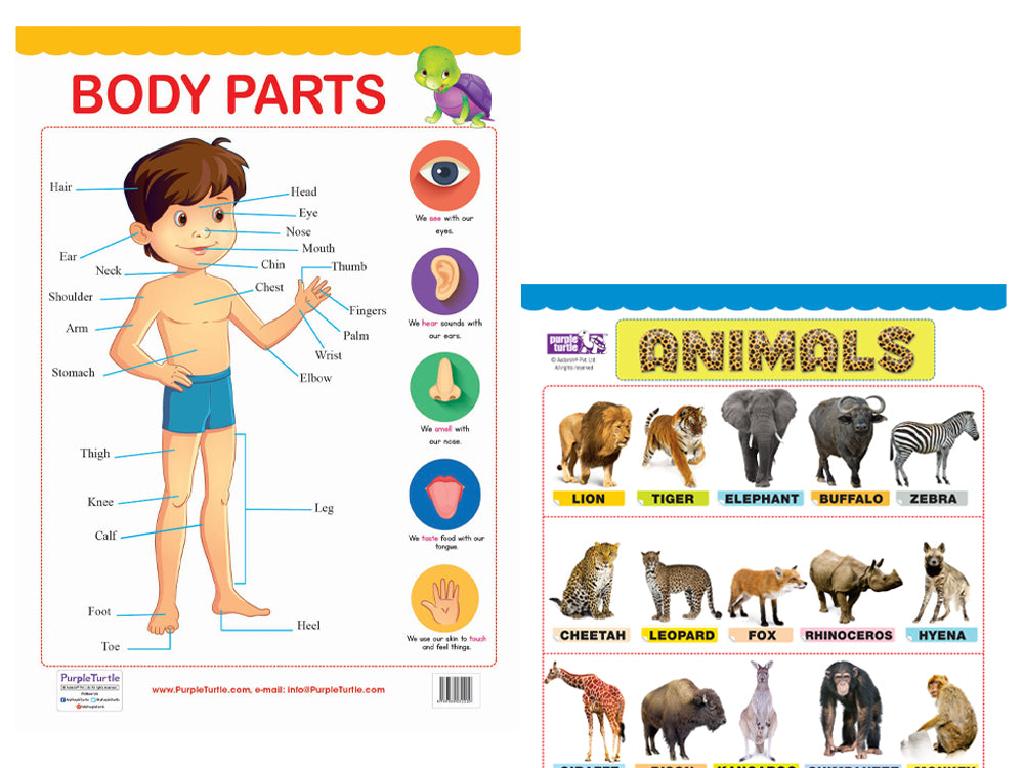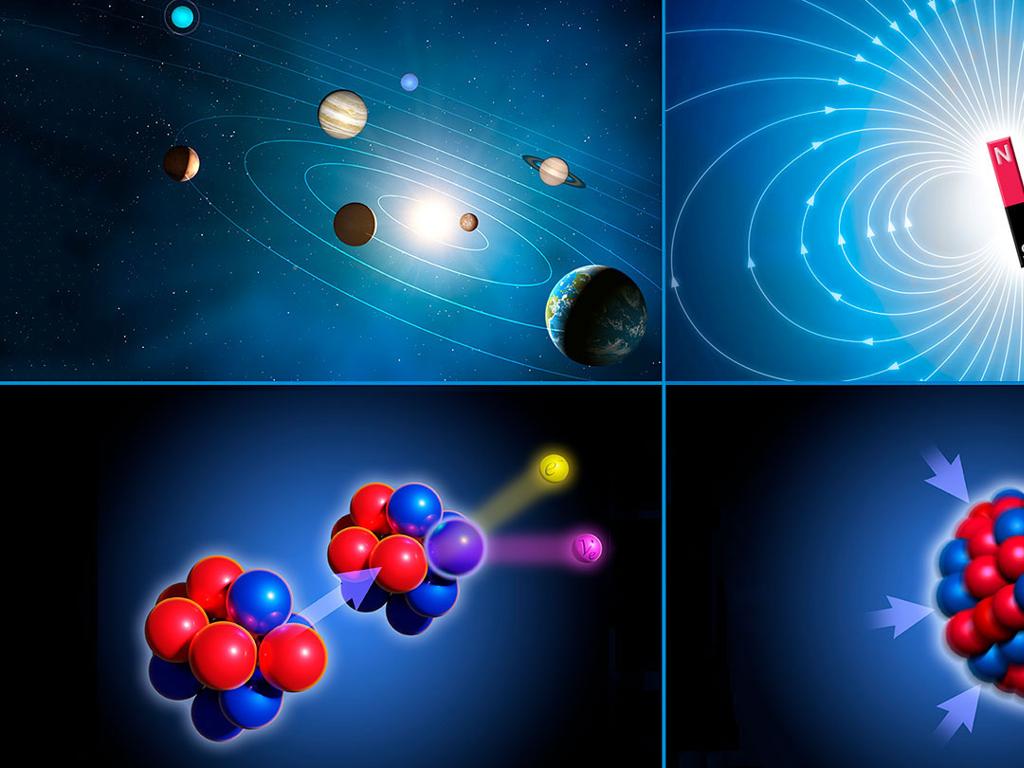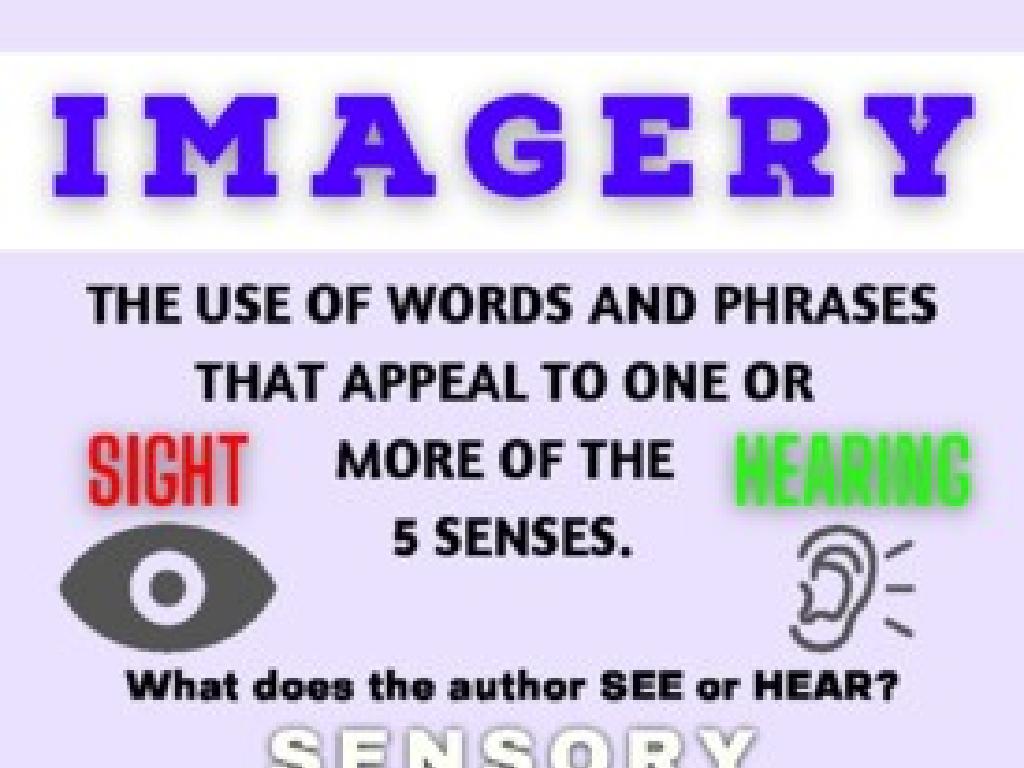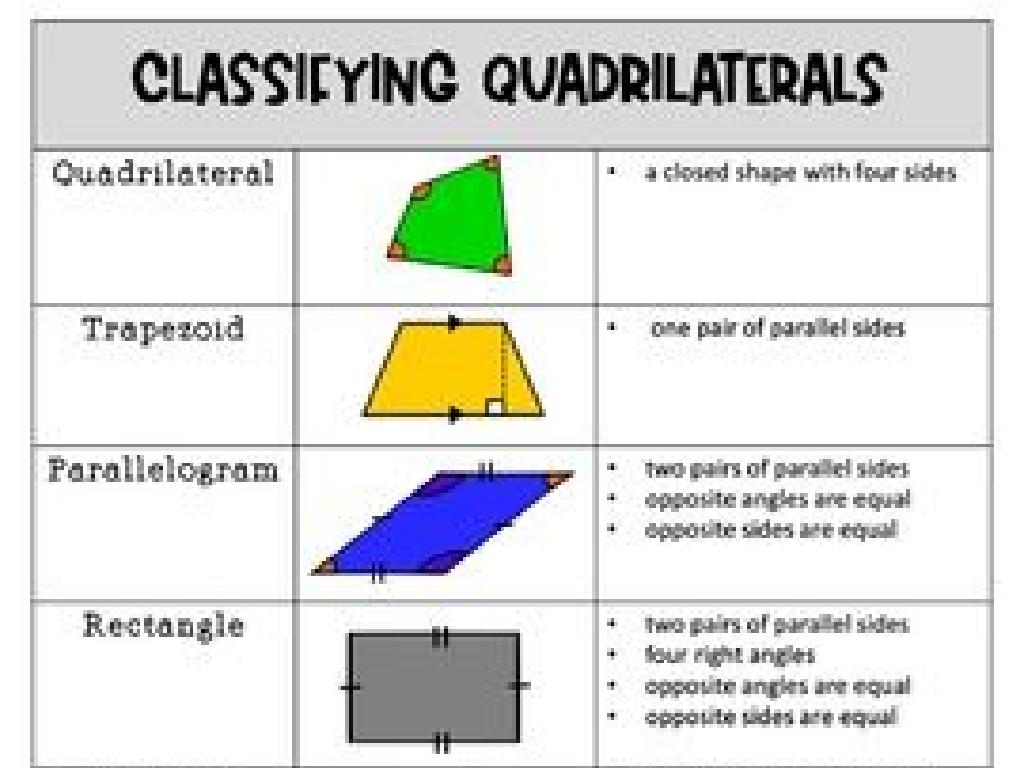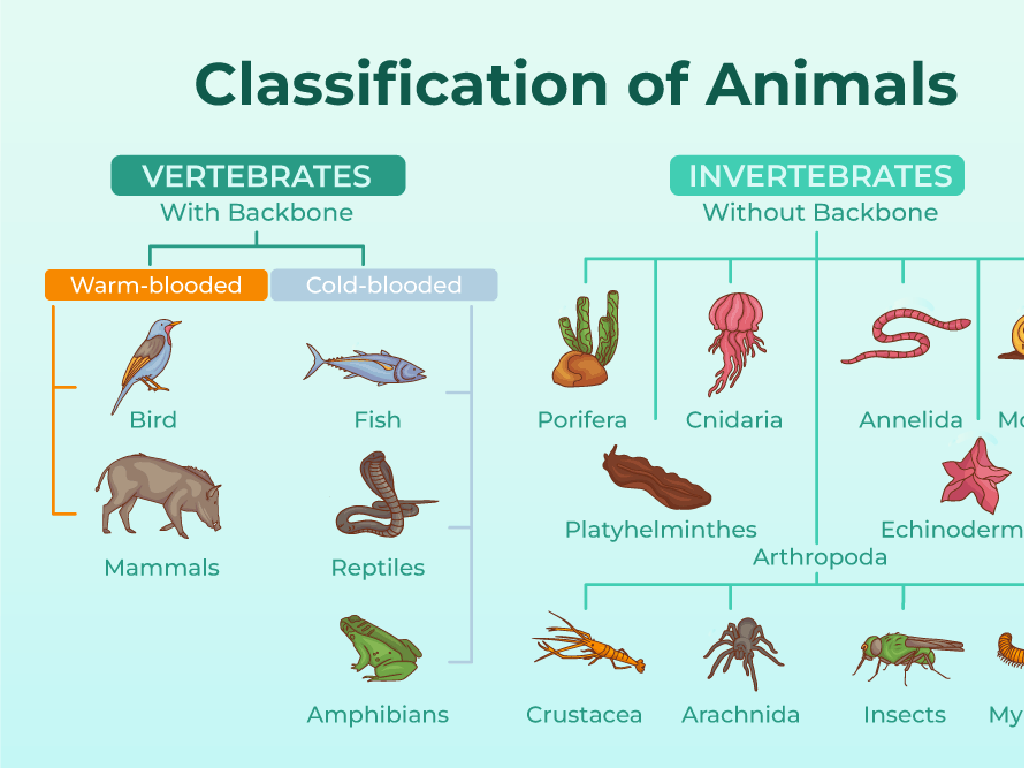Read About Science And Nature
Subject: Language arts
Grade: Seventh grade
Topic: Analyzing Informational Texts
Please LOG IN to download the presentation. Access is available to registered users only.
View More Content
Analyzing Informational Texts: Science & Nature
– Explore features of informational texts
– Titles, headings, images, and graphs aid comprehension
– Critical reading in scientific context
– Questioning the text improves critical thinking skills
– Analyze text structure and elements
– Look for cause/effect, compare/contrast, and sequence of events
– Understand scientific vocabulary
– Learn terms specific to science and nature topics
|
This slide introduces students to the skills needed for analyzing informational texts, specifically within the context of science and nature. Emphasize the different features that make up informational texts, such as titles, headings, and visual elements, and how they help in understanding the content. Highlight the importance of critical reading, encouraging students to actively question and engage with the text. Discuss text structures commonly found in scientific writings and the importance of understanding scientific vocabulary to fully grasp the concepts being presented. This foundation will aid students in becoming more proficient readers of complex informational texts.
Exploring Informational Texts in Science and Nature
– Define Informational Text
– Written works that provide facts about a specific subject.
– Examples of Informational Texts
– Science articles, biology textbooks, how-to manuals.
– Fiction vs. Non-fiction
– Fiction is made-up stories, non-fiction is based on facts.
– Purpose of Informational Texts
– To educate and inform about real-world topics and concepts.
|
This slide introduces students to the concept of informational texts, which are written to provide factual information about a subject, particularly in the context of science and nature. Students should understand that unlike fiction, which is created for entertainment with imaginary elements, informational texts are non-fiction and aim to educate. Examples include articles that explain scientific phenomena, textbooks that delve into biological processes, and manuals that instruct on nature-related activities. The purpose of informational texts is to inform and convey knowledge, which is crucial for students’ understanding of the world around them. Encourage students to think of questions they have about science and nature and how informational texts might provide answers.
Exploring Features of Informational Texts
– Identify text structures
– Recognize patterns like cause/effect and compare/contrast
– Understand graphical elements
– Learn to interpret charts, diagrams, and maps
– Navigate text features
– Use index, glossary, headings for better navigation
– Enhance comprehension skills
|
This slide aims to familiarize students with the different features of informational texts, which are crucial for analyzing and comprehending scientific and natural topics. Students should learn to identify text structures such as cause and effect or compare and contrast, which will help them understand the organization of information. Graphical elements like charts, diagrams, and maps are essential for visual learning and interpreting data. Text features like the index, glossary, and headings/subheadings are navigational tools that aid in finding information quickly and understanding the layout of the text. Encourage students to practice using these features with examples from science and nature texts to build their analytical reading skills.
Reading Strategies for Science Texts
– Preview the text
– Scan headings and images to get an idea of the topic
– Make predictions
– Use the title and subtitles to guess what you will learn
– Ask questions
– What do you wonder about the topic? Write it down!
– Annotate while reading
– Highlight key points and jot down notes in the margins
|
This slide aims to equip students with effective strategies for reading and understanding science texts. Previewing the text by scanning headings and images helps students anticipate the content and structure of the text. Encourage students to make predictions about what they will learn and to ask questions that may be answered in the text. Annotating is a critical skill; students should highlight important information and take notes to engage more deeply with the material. These strategies will not only improve comprehension but also make reading more interactive and enjoyable. In the next class, discuss how these strategies helped students understand the text better.
Critical Reading Skills in Science
– Evaluate source credibility
– Check the author’s qualifications and the publication date.
– Discern author’s purpose
– Is the author informing, persuading, or entertaining?
– Distinguish fact from opinion
– Facts are evidence-based, while opinions are beliefs.
– Understand point of view
– The perspective from which the content is presented.
|
This slide aims to equip students with the critical reading skills necessary for analyzing informational texts about science and nature. Students should learn to evaluate the credibility of sources by checking the author’s qualifications, the publication’s reputation, and the recency of the information. Understanding the author’s purpose helps students to critically assess the text’s intent, whether it’s to inform, persuade, or entertain. Recognizing the difference between fact and opinion is crucial in scientific texts, as facts are supported by evidence, whereas opinions are personal beliefs. Lastly, identifying the author’s point of view will help students to consider how perspective can shape the presentation of information. Encourage students to apply these skills when reading science articles or textbooks.
Analyzing a Science Article
– Read a science topic article
– Identify key information
– Look for important facts and data
– Determine main ideas
– Find the central points the article discusses
– Reflect on learning
– Consider new insights on science and nature
|
This slide is aimed at guiding students through the process of analyzing an informational text about science and nature. Students should start by reading a short article on a science topic, focusing on understanding the content. They should then identify key pieces of information such as facts, figures, and any data presented. Next, students should determine the main ideas or arguments that the article is conveying. Finally, they should reflect on what they have learned from the article about science and nature. Encourage students to think critically about the information and its implications. The goal is to enhance their analytical skills and deepen their appreciation for the natural world through scientific exploration.
Class Activity: Exploring Nature Through Text
– Group analysis of local flora and fauna
– Each group presents their findings
– Reflect on environmental appreciation
– How does learning about local species enhance our respect for nature?
– Discuss the importance of biodiversity
– Biodiversity is crucial for ecosystem health and resilience.
|
This activity is designed to engage students with the natural world through the lens of language arts by analyzing informational texts about local flora and fauna. Divide the class into small groups and provide each with a different text about local species. After analysis, each group will present their findings to the class, focusing on the importance of the species to the local ecosystem. Conclude with a reflection on how this knowledge can foster a deeper appreciation for the environment. Possible activities: creating posters, writing summaries, or preparing short presentations. Encourage students to consider the role of each species in the ecosystem and the importance of preserving biodiversity.
Wrapping Up: Science & Nature in Texts
– Recap today’s key lessons
– Homework: Article summary
– Summarize the main points and your thoughts on today’s reading.
– Choose an article for next class
– Find a science or nature article that interests you.
– Discuss how to pick an article
– Look for credible sources and engaging topics.
|
As we conclude today’s lesson, remind students of the key points discussed about analyzing informational texts, especially in the context of science and nature. For homework, they should write a summary of the article read in class, reflecting on the main ideas and their personal insights. Encourage them to be concise and to capture the essence of the text. For the next class, students need to bring an article related to science or nature that they find intriguing. Guide them on selecting articles from reputable sources and on topics that spark their curiosity. This will help foster a love for reading and enhance their analytical skills. In the next class, be prepared to discuss why they chose their particular articles and what they hope to learn from them.

